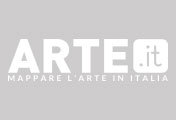Antonio Canal (Canaletto)
Venezia 07/10/1697 - Venezia 19/04/1768

Giovanni Antonio Canal, known as Canaletto, a painter and engraver, was the leader of the eighteenth-century school of Venetian landscape artists. He trained as an artist to follow in the footsteps of his father Bernardo, who specialised in painting theatre backdrops. Around 1719, once he had moved to Rome, he began to focus on landscapes, inspired by the examples of artists such as the Dutch painter Gaspar van Wittel and the Friulian artist Luca Carlevarijs. He began cultivating his own personal style early on, and despite remaining firmly rooted in the Venetian culture, his works gained favour on an international scale. His clients included the royal family of Liechtenstein and Joseph Smith, a banker, merchant and later English console to Venice, who played a decisive role in Canaletto’s career, presenting his works to circles of rich and sophisticated English collectors. Meanwhile, in his home country, Canaletto had elevated landscape art to a level where the movement represented the European Enlightenment, on a par with the paintings of historical subjects and portraits that had previously dominated the art scene. Between 1746 and 1756, he was primarily based in London, and it was during this period that he painted his views of the Thames and the English countryside, commissioned by the local high aristocracy. After the decade spent in England, his definitive return to Venice coincided with a downturn in the artist’s fortunes. He still produced some masterpieces, such as two atmospheric and rare nocturnes, or the Architectural Fantasy painted for the now elderly Joseph Smith, and he continued to experiment with light effects and perspectives in a series of small canvases. However he isolated himself ever more from the art scene and from the outside world until his death in 1768 at his house in San Lio.






